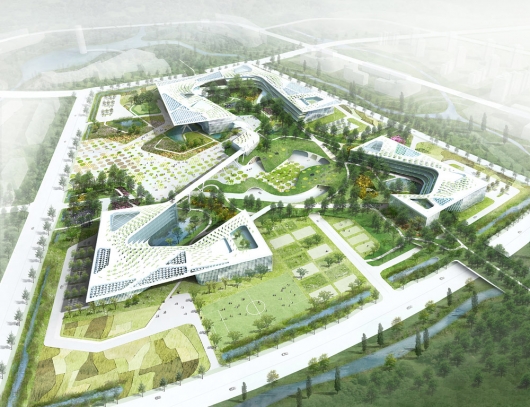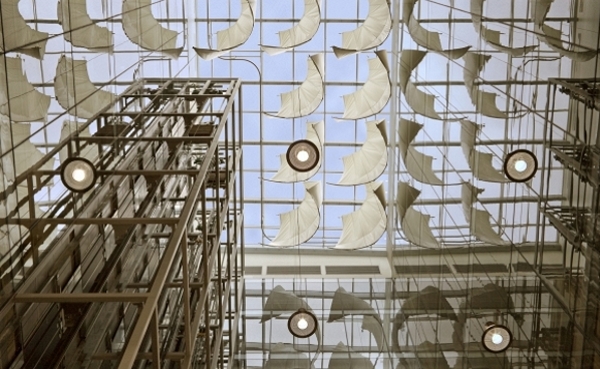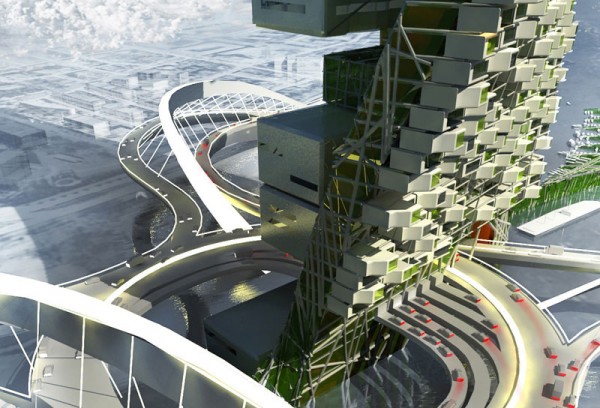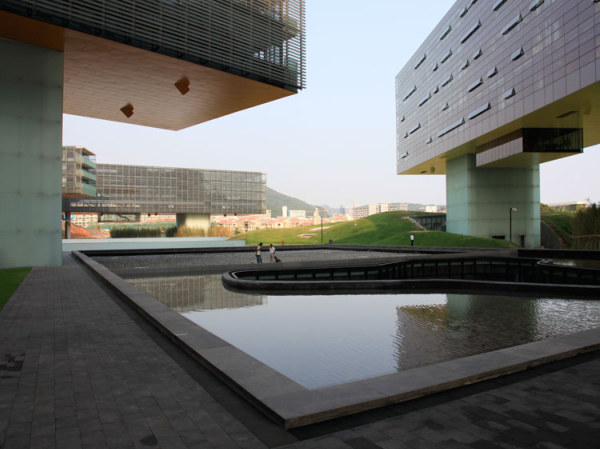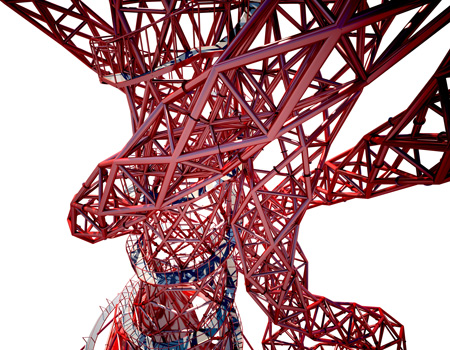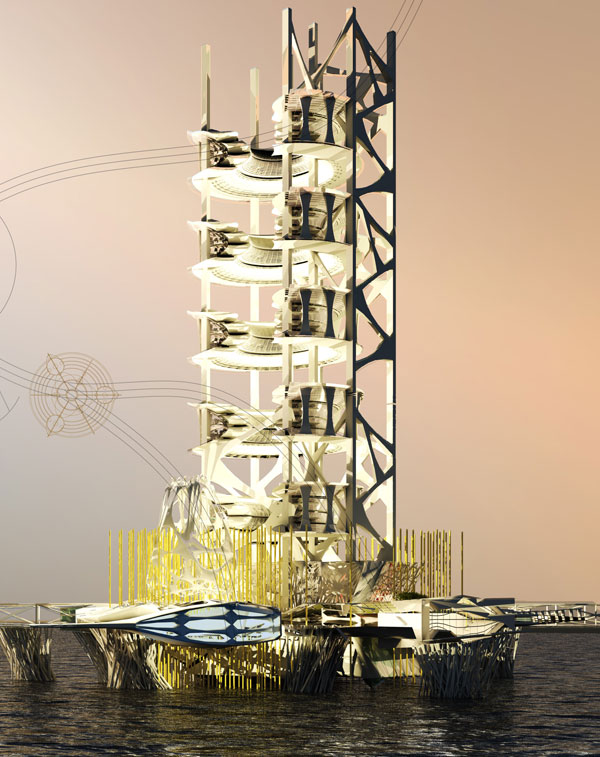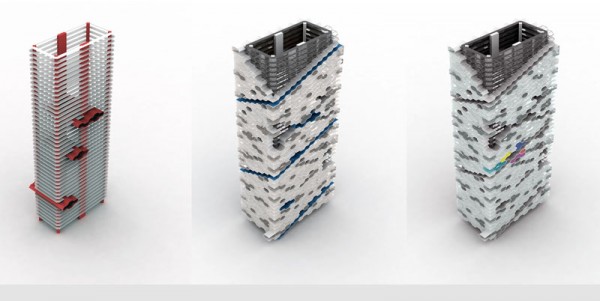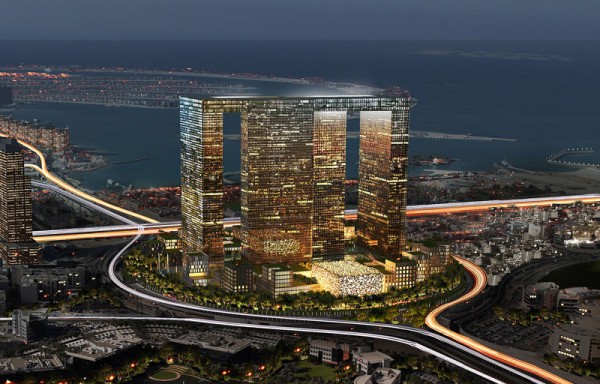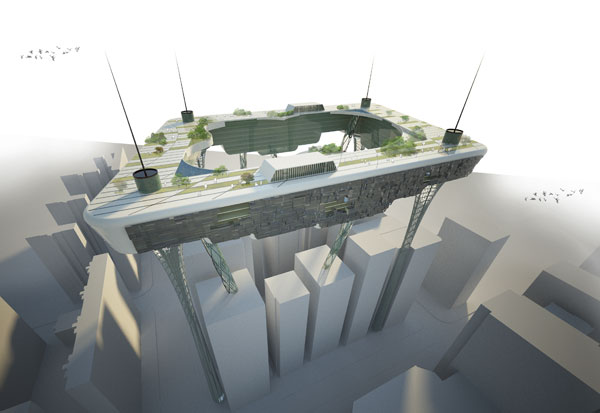Winning the Merit Award for Un-built work at the 2010 AIA New York Design Awards, the design of the Chung-Nam Government Complex successfully combines traditionally divergent elements: nature and the built environment; and government and civic spaces. The complex, designed by H Associates, Haeahn Architecture, and EDAW is set in the heartland of South Korea in the Chung-Nam Province, a place rich in natural resources. The design takes advantage of the natural splendor by creating a sinuous green roof that connects several buildings and provides a unified outdoor space that achos the surrounding mountains. In addition, the existing topography of the site is minimally disturbed and the green axes inform the organic shapes of the buildings, and provide cues that create view corridors extending to the natural scenery surrounding the site. Read the rest of this entry »
Chung-Nam Government Complex wins AIA New York Design Award
EPA’s Environmentally Sensitive Headquarters
When the EPA needed a new building for their Region 8 operations in Denver, Colorado they saw it as an opportunity to rethink the build environment. Completed in 2007 their LEED Gold district headquarters highlights the strength of sustainable building to the local design community. The highlights are the deep penetration of natural light and an aggressive green roof system which is helping mainstream the concept in a high altitude and arid climate. Designed by Zimmer Gunsul Frasca Architects LLP the buildings exterior design was intended to transition from a modern downtown district on one side and the historic LoDo area on the other, and so took on modest look for the neighborhood. The design team instead turned to focus their creative energy to the inside. Read the rest of this entry »
Mixer Skyscraper in Warsaw
Tomasz Olszewski
Poland
Located along the Vistula River in Warsaw, Poland, the Mixer Skyscraper is a mixed-use structure connected to the city’s maritime and road networks. The building consists of a steel exoskeleton where small prefabricated structures could be plugged-in during different construction phases – according to new requirements. A vertical spine contains public programs such as theaters, restaurants, museums, or shopping malls while a swiping structure that resembles a wave is used for housing and offices. Read the rest of this entry »
Steven Holl’s LEED Platinum ‘Horizontal Skyscraper’ in Shenzhen
When tasked to design a multi-use project for the Shenzhen Vanke Real Estate Co, Steven Holl opted against tradition, and came up with a rather intriguing design – a horizontal skyscraper. Holl and his team where shackled against a 35 meter height restriction and instead of building multiple smaller building for each function, they kept them in one building and laid it on its side. In fact, if you laid the Empire State Building on its side, the two would be about the same length. On top of the unique design, the Vanke Center is slated for LEED Platinum certification and is built to withstand a tsunami, should it ever experience one. Read the rest of this entry »
ArcelorMittal Orbit by Anish Kapoor
Artist Anish Kapoor has won the commission to design a 115m high public artwork at Olympic Park in London, to be built as part of London’s Olympic Games in 2012.
The sculpture, called ArcelorMittal Orbit, has been designed in collaboration with structural engineer Cecil Balmond of Arup.
The sculpture – the largest in the UK– will consist of a continuous looping lattice of tubular steel mimicking the orbital trajectory of space objects. The tower will offer views of the Olympic Park and London’s skyline from a viewing platform. Visitors will be able to take a trip up the structure in a large elevator and will have the option of walking down the spiralling staircase. Read the rest of this entry »
Vertical Farms
Ruwan Fernando
Australia
This design by Australian architect Ruwan Fernando is an open skyscraper with five clusters of u-shaped structures for vertical farming. This project is designed for low-depth water bodies – it uses specialized mechanical filaments for tidal energy production.
The shape of the clusters allows maximum sunlight and ventilation. It utilizes wind turbines and solar panels to produce the remaining energy requirements. The idea is to create a network of vertical farms and connect them with monorails, roads, and pedestrian bridges. Read the rest of this entry »
Hive Skyscraper
Sang-Yun Han, Cheol Yong Kim, Sung Hoon Park
United States
This proposal is an attempt to redefine skyscrapers as a connecting agent between architecture and the city through the re-composition of the surrounding urban context. Programs decoded from analyzing urban contexts are recomposed and disseminated along the inclined interlinking circulation system in order to enhance human interaction and extend streets throughout the entire building. Read the rest of this entry »
Tel Aviv’s Design Museum Holon
The recently opened design museum in the suburbs of Tel Aviv was built in hopes of transforming the city of Holon into an epicenter of culture and education. To that end they brought in a famous architect and renowned group of international guest curators to make the museum famous. The Design Museum Holon was designed by Ron Arad Architects, led by Tel Aviv born industrial designer and architect, Ron Arad. After four years of construction the museum was inaugurated on January 31st, 2010 and its first exhibition just opened. Read the rest of this entry »
Dubai Pearl / Schweger Architects
Schweger Associated Architects
Peter P. Schweger
Germany
Dubai Pearl is a new residential and commercial development in Dubai situated in the newest part of the city with magnificent views to the Gulf, the Palm Island, and the Burj Al Arab. The complex has been designed to receive Gold LEED certification and to become a new landmark for the city. Read the rest of this entry »
Horizontal Skyscraper Above Existing City Block
Rae Won Noh, In Ki Kim, Jeong Tae Kim, Hyo Bin Jung, Jang Ook Lee
South Korea
The Horizontal Scarper main concept is to build a new city-like structure above existing blocks. The main structural elements, also used for vertical circulation, are located on free areas at street level. The rest of the building is a fifteen floors ribbon floating on top of the existing buildings without blocking the natural light. Apart from residential and office spaces it provides a new recreational space for the city; its rooftop is a green garden with sports facilities. Read the rest of this entry »

